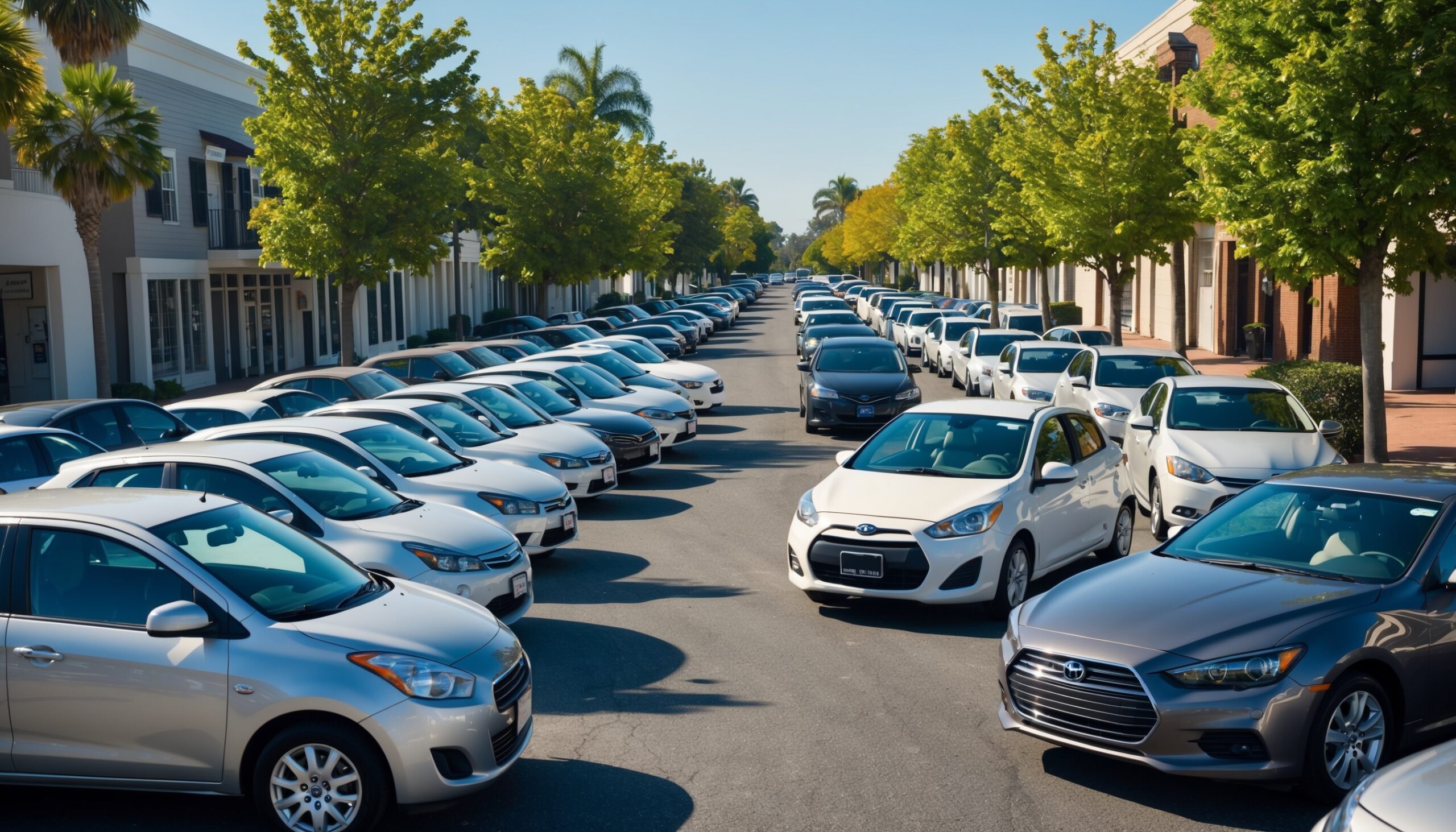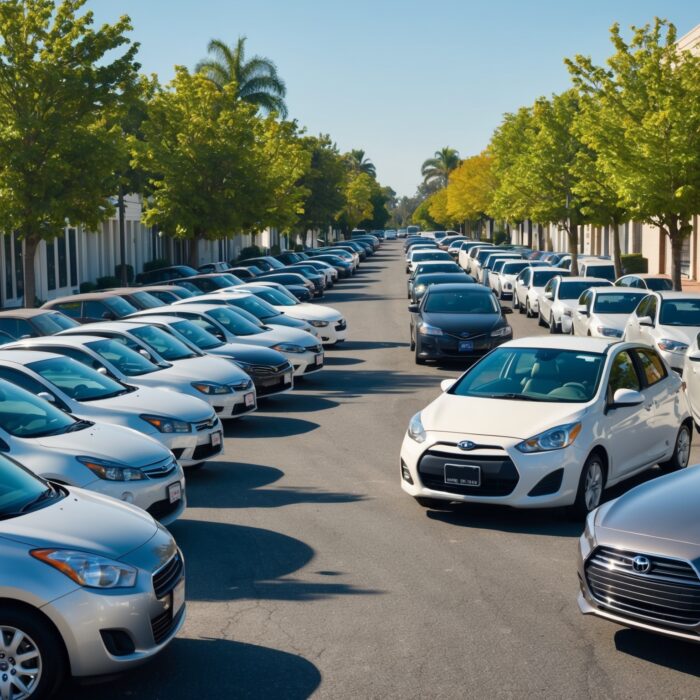Why Did So Many Cars Switch From Manual To Electronic Parking Brakes?
Ah, the distinct sound of a manual parking brake being pulled up, followed by that satisfying feeling of knowing your car is securely parked. For many car enthusiasts, this was not just a functional feature of the vehicle; it was a part of the driving experience. But as technology has advanced, so has the way we secure our vehicles. Enter the electronic parking brake (EPB)—a marvel of modern engineering that has taken the automotive world by storm. But why did so many cars make the switch from traditional manual parking brakes to their electronic counterparts? Buckle up, gearheads! We’re about to dive deep into the reasons behind this shift.
The Evolution of Parking Brakes
Parking brakes have evolved significantly since their inception. Originally designed to prevent vehicles from rolling away when parked, they have transformed from simple mechanical systems to sophisticated electronic ones. Here’s a brief overview of this evolution:
- Mechanical Parking Brakes: The classic handbrake or foot-operated brake, often requiring physical force to engage.
- Hydraulic Systems: Introduced in some performance vehicles, these systems offered a bit more control but still required manual operation.
- Electronic Parking Brakes: Utilizing electronic motors and sensors, these systems engage at the push of a button, offering convenience and additional safety features.
Reasons for the Shift to Electronic Parking Brakes
So, what are the driving forces behind this technological transition? Let’s explore some of the key reasons that have led to the widespread adoption of electronic parking brakes in modern cars.
1. Space Efficiency
One of the most significant advantages of electronic parking brakes is their compact design. Manual parking brakes require a substantial amount of space, often incorporating a lever and cables that can clutter the interior. In contrast, EPBs take up far less room, allowing manufacturers to design sleeker, more spacious cabins.
2. Enhanced Safety Features
Safety is at the forefront of automotive engineering, and electronic parking brakes come equipped with advanced safety features that manual brakes lack. For instance:
- Automatic Release: Many EPBs automatically disengage when the driver shifts into gear, reducing the risk of driving off with the brake engaged.
- Hill Start Assist: This feature prevents rollback on inclines, giving drivers extra confidence when starting on a hill.
- Integrated Sensors: EPBs can monitor the vehicle’s position and automatically engage when necessary, providing an extra layer of security.
3. Improved Performance
Performance enthusiasts may be skeptical about the switch from manual to electronic systems, but EPBs can actually enhance the driving experience. With the ability to integrate with other vehicle systems, electronic parking brakes can improve overall vehicle dynamics:
- Precision Control: EPBs offer more precise engagement and release, which can improve handling in certain driving conditions.
- Reduced Weight: By eliminating heavy mechanical components, manufacturers can lower the vehicle’s weight, enhancing performance and fuel efficiency.

4. Modern Aesthetics
Let’s face it: in today’s automotive market, aesthetics matter. The sleek, minimalist design of electronic parking brakes aligns perfectly with the modern vibe of new vehicles. Gone are the days when a bulky handbrake lever dominated the center console. Instead, drivers can enjoy a clean, uncluttered space that enhances the overall look of the interior.
5. Integration with Advanced Technologies
As cars become more technologically advanced, the need for components that can seamlessly integrate with other systems increases. Electronic parking brakes are designed to work in harmony with various vehicle technologies:
- Adaptive Cruise Control: EPBs can communicate with systems like adaptive cruise control, automatically engaging when the vehicle comes to a stop.
- Lane Keep Assist: Integrated vehicle systems can utilize EPBs to enhance stability and control when navigating curves or hills.
The Driver Experience
While the technical benefits of electronic parking brakes are compelling, it’s also essential to consider the driver experience. Many car enthusiasts cherish the tactile feedback of a manual parking brake. So how does the switch to an electronic system affect this experience?
Also Read: Ram Is Back In NASCAR—With a New Driver Every Single Week
1. Learning Curve
For drivers who are accustomed to manual parking brakes, transitioning to an electronic system may require a bit of adjustment. The absence of a physical lever can feel foreign at first. However, most users find that the convenience quickly outweighs any initial hesitation.
2. Increased Convenience
Imagine a scenario: you’re parked on a steep incline. With a manual brake, engaging it requires a bit of effort, particularly if you’re in a hurry. With an electronic parking brake, all you need to do is press a button, and you’re good to go. This convenience is particularly appreciated in urban settings where parking is often a challenge.
Challenges and Drawbacks
Despite the numerous advantages of electronic parking brakes, they are not without their challenges. Here are some potential drawbacks that car enthusiasts should consider:
1. Reliability Concerns
With any electronic system, there is always a concern about reliability. While modern electronic parking brakes are generally very reliable, they can be susceptible to electrical failures or software glitches. In contrast, manual systems are mechanical and less prone to such failures.
2. Maintenance and Repair Costs
When it comes to repairs, electronic systems can often be more complicated and expensive to fix than their manual counterparts. If something goes wrong with the electronic components, it may require specialized knowledge and tools to diagnose and repair the issue.
The Future of Parking Brakes
As we look ahead, the automotive industry continues to embrace technology at an unprecedented pace. What does this mean for parking brakes? Here are a few emerging trends that could shape the future:
- Fully Autonomous Systems: As vehicles move toward full autonomy, parking brakes may become part of an integrated system that handles parking entirely on its own.
- Smart Technology: Future parking brakes may utilize AI to learn driver habits and optimize performance based on your driving patterns.
- Sustainability: As the industry shifts toward greener solutions, the materials and technologies used in parking brakes may evolve to reduce environmental impact.
In Summary
The transition from manual to electronic parking brakes represents a significant shift in automotive design, driven by a combination of space efficiency, safety features, and modern aesthetics. While some enthusiasts may lament the loss of the tactile experience associated with traditional systems, the advantages of electronic parking brakes are hard to ignore. From increased convenience to improved integration with advanced technologies, EPBs are set to become a staple in the automotive landscape.
As we embrace these innovations, it’s exciting to think about the future of parking brakes and how they will continue to evolve. Whether you’re a die-hard fan of manual systems or a proponent of the latest tech, there’s no denying that the automotive world is changing, and Torque Feed will be right here to keep you informed every step of the way.
Also Read: These Are The Longest Road Trips You're Willing To Take












